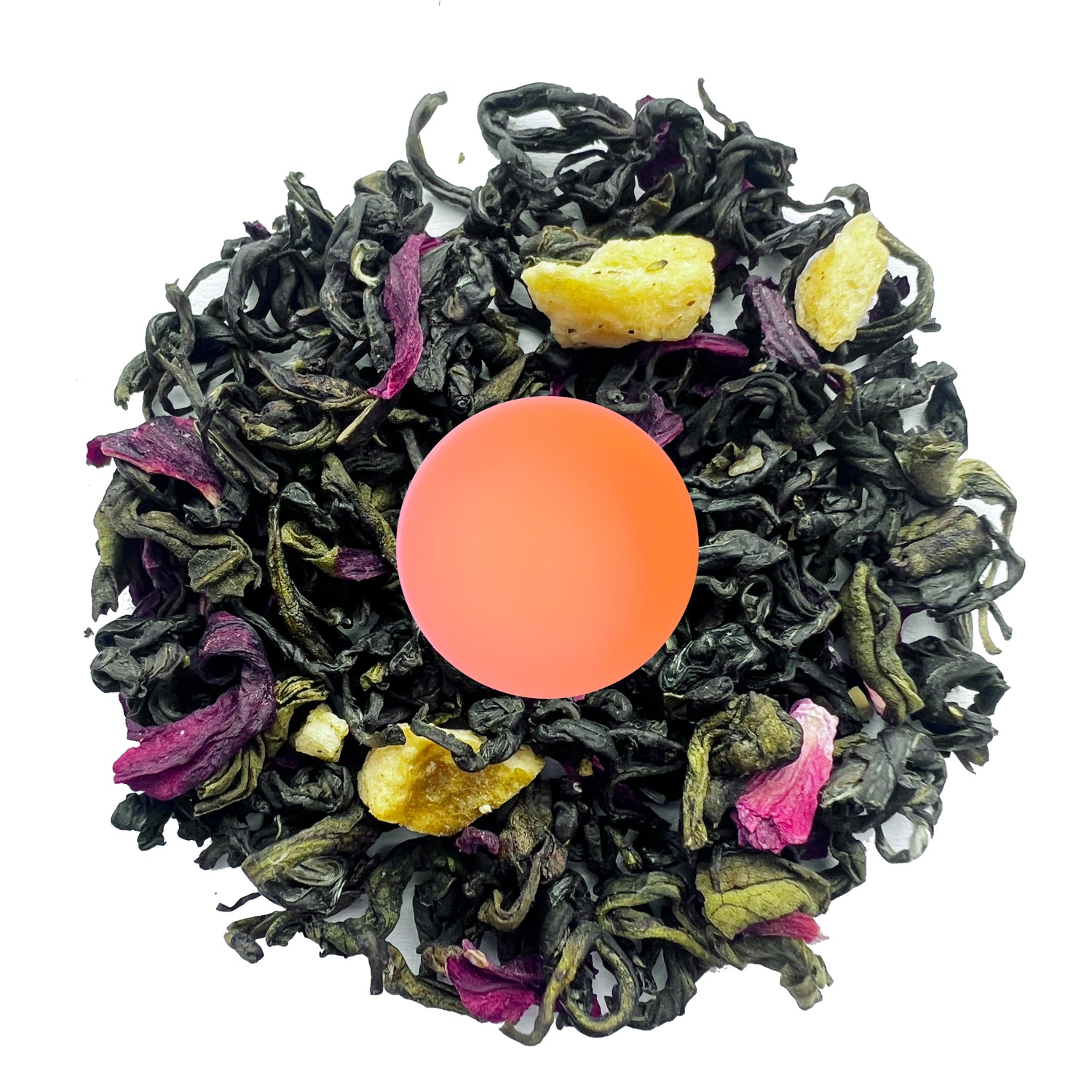Lemongrass Teas: Everything You Need to Know

Imagine sipping a bright yellow cup of refreshing lemongrass tea with a citrusy aroma and the zing of lemony flavor!
Its bright and zesty flavor not only tantalizes your taste buds but can also instantly uplift your spirits.
Whether served hot or cold, lemongrass tea could be the perfect way to add a splash of excitement and health to your daily routine.
What is lemongrass tea?
Lemongrass, scientifically known as Cymbopogon citratus, is an herbal tea prepared by infusing the dried or fresh stalks of the lemongrass plant. People enjoy this tea for its refreshing citrus flavor and aroma. A brewed lemongrass tea has a bright yellow color.

Nutritional Properties of Lemongrass Tea
A study has mentioned that lemongrass contains significant nutrients like vitamins B-6, C, A, etc. In addition to this, according to the USDA, 67 grams (1 cup) of raw lemongrass plant contains the following estimated nutrients.
- Caffeine: 0 mg
- Calcium, Ca: 43.6 mg
- Manganese: 3.5 mg
- Energy: 66.3 kcal
- Protein: 1.22 g
- Iron, Fe: 5.47 mg
What does lemongrass tea taste like?
Lemongrass tea has a mild citrus taste that gives off a reminiscent of lemon flavor but not as tart as lemon juice. It often has subtle hints of ginger and mint, offering a slightly sweet and lemony profile.

How to make lemongrass tea?
Lemongrass tea is pretty simple to brew at home. You could use the dried loose-leaf lemongrass tea, teabag, or even the fresh stalks.
If you’re using fresh lemongrass, make sure to peel the outer layer of stalk and chop them into 1-2 inch pieces.
You could enjoy hot or cold lemongrass iced tea. Also, do not hesitate to use exciting flavors to enhance your taste.
You’ll Need:
- 12 fl oz of filtered water.
- 1 to 1.5 teaspoons of lemongrass tea, or 1 lemongrass tea bag.
- A kettle or saucepan.
- A steeping cup. Or a teacup and steel infuser.
- 1 teaspoon honey, or 1 inch crushed fresh ginger for flavors (optional).
Instructions:
- Pour 12 fl oz of filtered water into the kettle or saucepan and boil it.
- Now, put 1 to 1.5 teaspoons or 1 teabag of lemongrass tea into your brewing utensil.
- Once the water boils, pour the hot water over your lemongrass tea.
- Steep the tea for around 5 to 7 minutes.
- Discard the tea leaves or tea bag and enjoy your brew!

Health Benefits of Lemongrass Tea
Lemongrass tea is packed with beneficial compounds like alkaloids, tannins, saponins, flavonoids, and quinones, along with essential vitamins and minerals. Its antioxidant, anti-inflammatory, and antibacterial properties contribute to various health benefits. It may support red blood cell production due to its iron, copper, zinc, and folic acid content, potentially aiding in hemoglobin levels. Research suggests it could help regulate blood pressure by slightly lowering systolic levels while increasing diastolic pressure. Lemongrass tea’s detoxifying properties may assist in flushing out toxins and promoting pancreatic health. Additionally, it may support digestion by soothing gastric ulcers, reducing bloating, and easing constipation. Its antimicrobial nature also benefits oral health, potentially preventing gum inflammation, bad breath, and dental plaque.
| Explore more: Remarkable health benefits of Lemongrass Tea |
How to use lemongrass?
Besides brewing lemongrass as a tea, it has versatile applications such as culinary, cosmetics, or even natural insect repellent uses.
You can find various lemongrass recipes like soups, sauces, curries, seafood dishes, etc. The essential oil of this plant is also used in soaps, lotions, shampoos, etc. Similarly, people also grow lemongrass plants to repel insects like mosquitoes in their surroundings.

Lemongrass Tea FAQs
Does lemongrass repel mosquitoes?
Yes, since lemongrass contains citronella oil, it helps in repelling mosquitoes. However, it might not be as effective as synthetic repellents in a high mosquito population.
What does lemongrass repel in a garden?
Since lemongrass has a strong citrusy aroma, it might repel some common garden pests like mosquitoes, flies, spiders, ants, fleas, etc. It could also help to deter snakes.
Is lemongrass a perennial?
Yes, lemongrass is a perennial plant. Although it is sensitive to frost, it can be grown year-round in cooler climates.
How to cook with lemongrass?
You could cook lemongrass in different recipes like curries, soups, or stews. First, peel the tough outer layer of lemongrass and cut the stalk as per the dish you’re making. Throw the chopped lemongrass into your curry paste, marinades, or stir-fries.

Conclusion
Explore our Danfe Tea’s caffeine-free loose-leaf lemongrass tea that smells incredibly fresh and is made in the Himalayas. With each sip, you’ll experience the delightful burst of lemony zest that dances on your taste buds. Don’t wait - buy lemongrass tea today and savor it!








